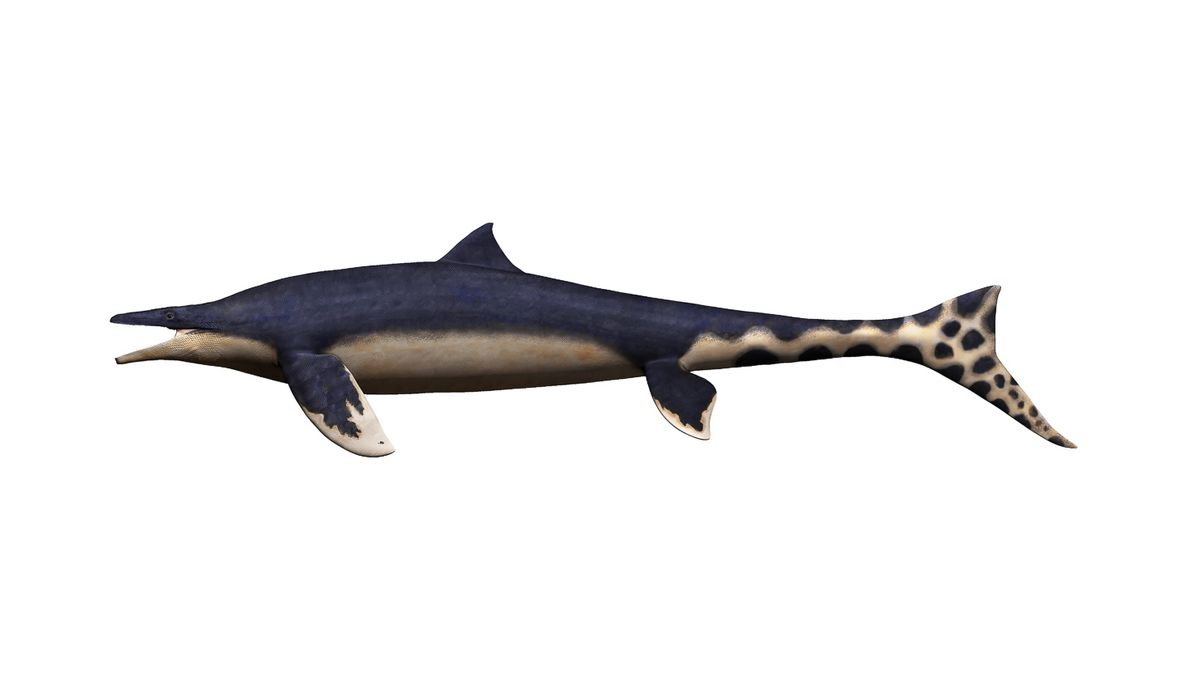
If the idea of time traveling to the oceans of the Cretaceous has ever sounded like an appealing idea to you, you might be about to change your mind. Researchers have described a brand-new, 72-million-year-old species of mosasaur, that’s thought to have terrorized the ancient Pacific Ocean.
The study describing the mosasaur came as a result of co-author Akihiro Misaki uncovering a near-complete fossil specimen of the species – named Megapterygius wakayamaensis – whilst hunting for ammonites in Japan’s Wakayama Prefecture. In fact, it’s thought to be the most complete mosasaur skeleton ever found in Japan or the northwestern Pacific.
It took researchers five years to remove the sandstone surrounding the fossil, and they also had to make a cast whilst it was still in situ, in order to provide an accurate record of how all the bones were positioned in the skeleton.
The result of that painstaking work, however, was the discovery of a species unique among mosasaurs, with rear flippers longer than its front ones and a rudder-like tail. “We lack any modern analog that has this kind of body morphology — from fish to penguins to sea turtles,” said co-author Takuya Konishi in a statement. “None has four large flippers they use in conjunction with a tail fin.”
The authors have theorized that the large front fins may have helped the mosasaur with rapid maneuvering, the rear fins with pitch to dive or surface, and the tail for acceleration. “It’s a question just how all five of these hydrodynamic surfaces were used. Which were for steering? Which for propulsion?” Konishi explained. “It opens a whole can of worms that challenges our understanding of how mosasaurs swim.”
Either way, these features, combined with nearly binocular vision, likely would’ve made M. wakayamaensis a lethal hunter; mosasaurs are well known to have been apex predators. And like modern apex predators, great white sharks, the Wakayama mosasaur may also have had a dorsal fin.
The researchers reached this conclusion based on the positioning of neural spines along the mosasaur’s vertebrae, in a fashion similar to that of some modern-day sea creatures.
“It’s still hypothetical and speculative to some extent, but that distinct change in neural spine orientation behind a presumed center of gravity is consistent with today’s toothed whales that have dorsal fins, like dolphins and porpoises,” said Konishi.
Although M. wakayamaensis has its official scientific name, the researchers call it the Wakayama Soryu, meaning blue dragon. “In China, dragons make thunder and live in the sky. They became aquatic in Japanese mythology,” Konishi explained.
The Wakayama Soryu isn’t the only sea dragon to have been discovered as of late – check out Jörmungandr and its very angry eyebrows, and the super-sized, fork-tongued mosasaur found in Mexico.
The study is published in the Journal of Systematic Palaeontology.
Source Link: 72 Million Years Ago, A Monstrous "Blue Dragon" Roamed The Pacific Ocean